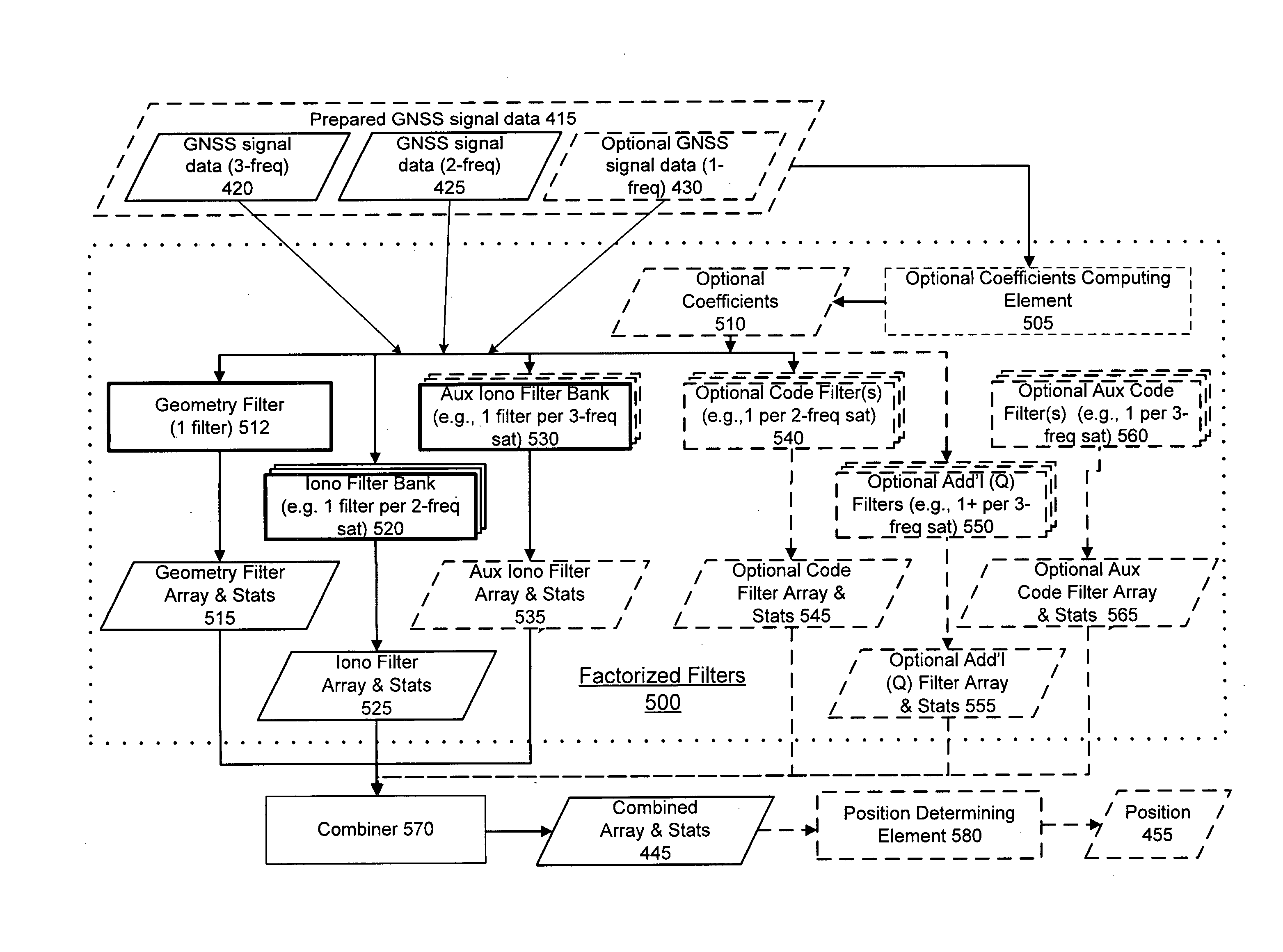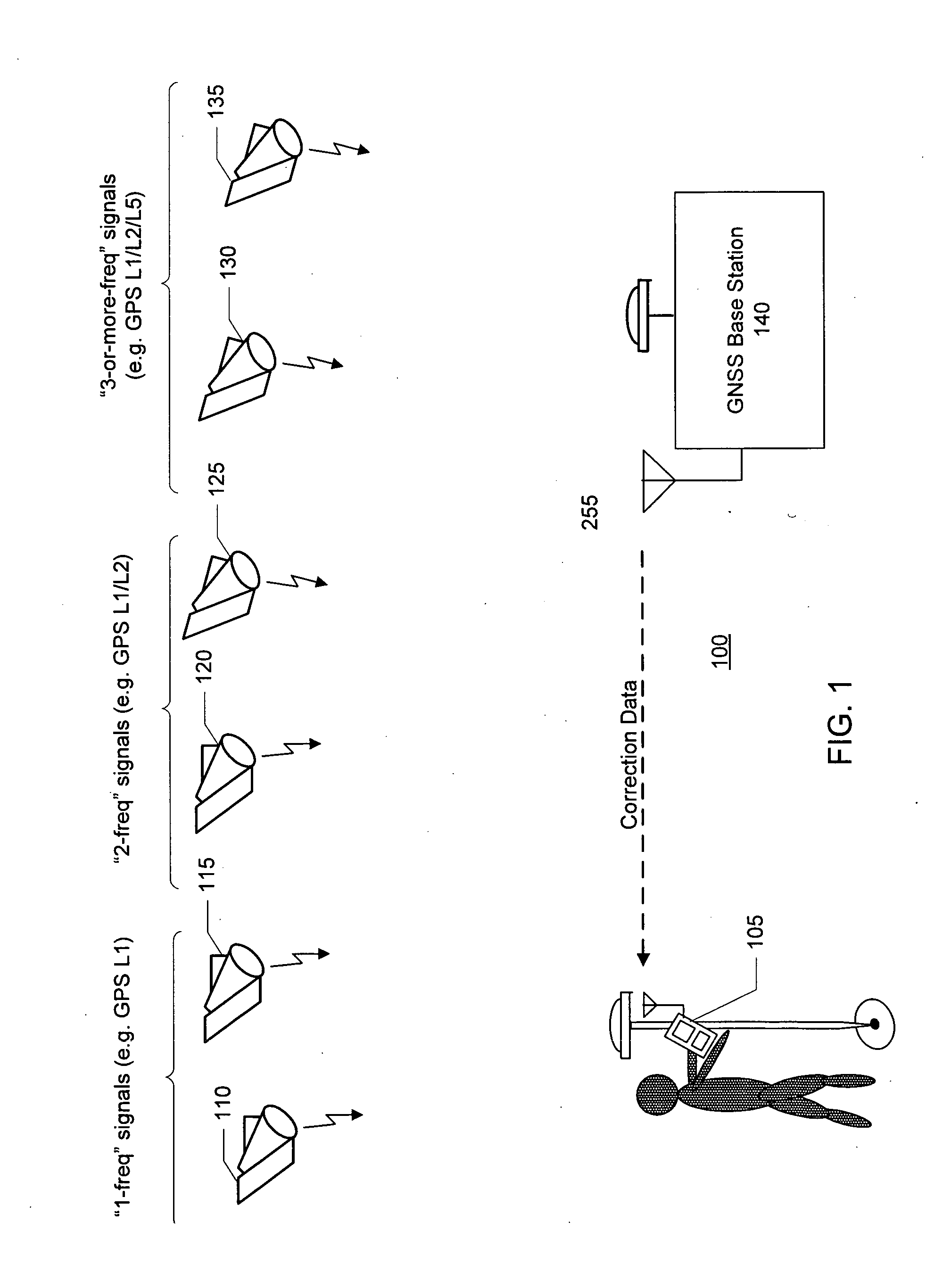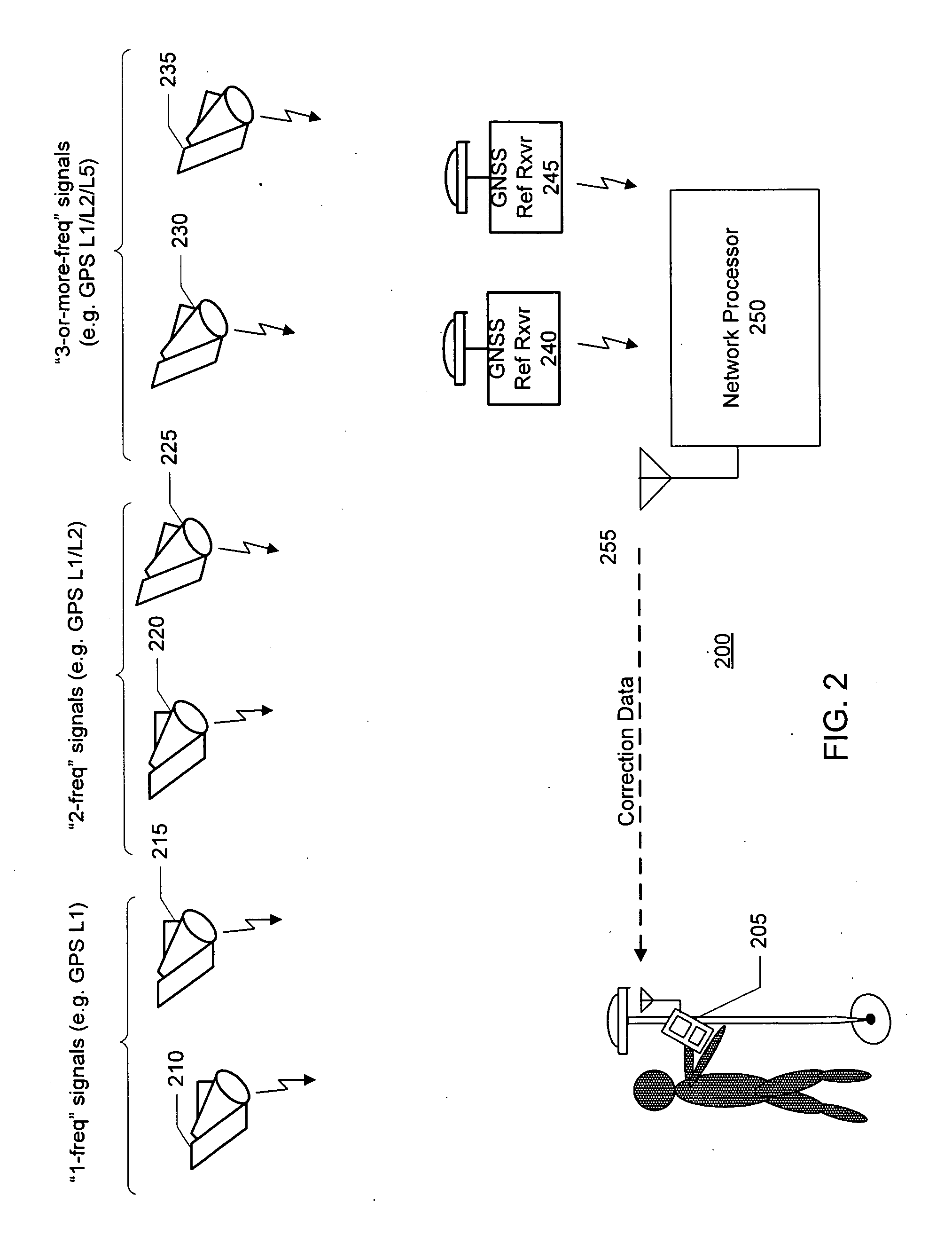GNSS Signal Processing Methods and Apparatus with Ionospheric Filters
a technology of ionospheric filters and signal processing methods, applied in satellite radio beaconing, measurement devices, instruments, etc., can solve the problems of not providing all free-to-air, lagging galileo launch schedule, etc., and achieve the effect of improving ambiguity estimation and improving the processing of gnss signals
- Summary
- Abstract
- Description
- Claims
- Application Information
AI Technical Summary
Benefits of technology
Problems solved by technology
Method used
Image
Examples
Embodiment Construction
[0049]Overview
[0050]Embodiments of the invention relate generally to any GNSS with a mixture of 2 and 3 or more frequency bands. For GPS, the three frequency bands are L1, L2 and L5. For GLONASS, the latest M satellites support L1 and L2 signals, however there are plans for GLONASS to support a new frequency band, denoted L3, located between 1164 and 1215 MHz on the GLONASS-K satellites.
[0051]The Galileo signal structure includes L1, E5A, E5B and E6 bands. The E6 band is a public regulated signal and therefore is unlikely to be available for general use. The E5A and E5B signals can be tracked separately and therefore Galileo can be used for three-frequency operation if desired. It is also possible to combine the E5A and B signals to produce carrier phase and code measurements with high accuracy (excellent multipath suppression). Hence Galileo can be used in either 2-, or 3-frequency modes.
[0052]The Chinese Beidou (Compass) satellite system is already under development, however detai...
PUM
 Login to View More
Login to View More Abstract
Description
Claims
Application Information
 Login to View More
Login to View More - R&D
- Intellectual Property
- Life Sciences
- Materials
- Tech Scout
- Unparalleled Data Quality
- Higher Quality Content
- 60% Fewer Hallucinations
Browse by: Latest US Patents, China's latest patents, Technical Efficacy Thesaurus, Application Domain, Technology Topic, Popular Technical Reports.
© 2025 PatSnap. All rights reserved.Legal|Privacy policy|Modern Slavery Act Transparency Statement|Sitemap|About US| Contact US: help@patsnap.com



